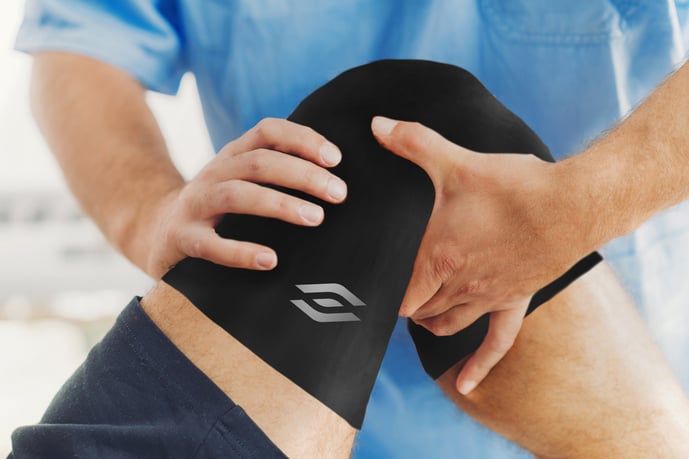What Can Vertical Oscillation Tell Us About Your Running Performance?
Vertical oscillation is an important variable that adds critical detail to the overall picture of a runner’s performance Reduced vertical oscillation can turn an average runner into a great runner. Let's explain this variable in-depth and explore how technology, and solutions like our digital compression sleeve, can help runners make impressive gains.

Digging into the Details: Vertical Oscillation
Vertical oscillation is the amount of vertical movement a runner has with each stride. Greater vertical oscillation is associated with increased ground reaction forces and vertical loading rates. This adds unnecessary stress to the body.
Where running cadence is more predictive of injuries like Achilles tendinopathy, and knee and hip issues, vertical oscillation tells us more about our risk of injuries such as tibial stress fractures. Essentially, vertical oscillation indicates how much energy is being spent moving the body vertically, and then back into the ground, rather than propelling forward horizontally.
How Does it Impact Running Performance?
A helpful cue to reduce vertical oscillation is to keep the body as low to the ground as possible without slouching. Efficient running should feel more like gliding over the ground than bouncing up and down, jarring the knees and lower back on each step. When a runner can relatively transfer more of their energy towards forwarding movement, they become more efficient. This means faster running while using less energy. (Sounds pretty good, right?)
Where Technology Can Help
While some smartwatches attempt to measure vertical oscillation, effective accuracy can be challenging; the movement of a single arm during running is not always highly reflective of what the rest of the body is doing. For example, many people have asymmetric reciprocal reach patterns with their arms – they swing one arm differently than they swing the other. If they only looked at their watch to inform their assessments, they could improve (or worsen) their vertical oscillation by simply switching their watch from one wrist to the other. This is why many coaches are hesitant to rely on vertical oscillation data from a smartwatch.
Running, like pretty much everything else, is a product of lots of things happening and interacting at once. Thus, there is no single factor or cue that controls everything, but each factor has some measure of influence on the overall system. This is why it’s so important to bring multiple data points and the most complete picture of your body’s movement and function as possible into focus. Better data means better training and improved performance.

The Cipher Skin BioSleeve
Enter: Cipher Skin. The Cipher Skin BioSleeve — Knee captures a detailed picture of the body’s range of motion, which provides accurate data on metrics including — you guessed it — vertical oscillation. Cipher Skin's smart sleeve technology is able to see everything from knee joint angles to the relative position of the femur and tibia relative to the ground throughout the full gait cycle, including the vertical oscillation of specific landmarks on the body.
This data can be used for both real-time feedback and live training adjustments, as well as post-workout data analysis. This next-generation level of personal data brings us a big step closer to having a full biomechanics lab built into our normal day-to-day workout clothing, which helps everyone from recreational runners to Olympic athletes train harder, perform better, and reduce injuries.

